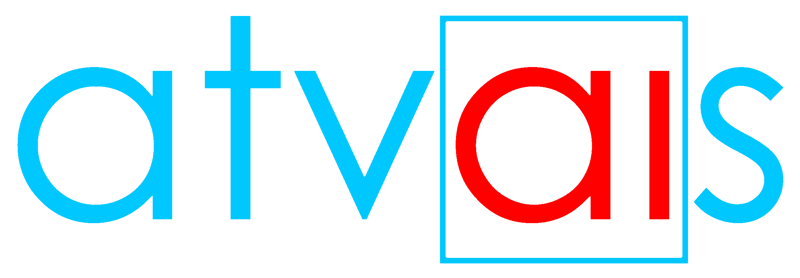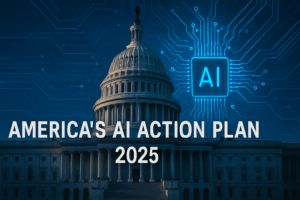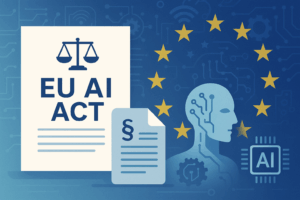The enactment of Executive Order 14110 on 30 October 2023 marked a significant milestone in the United States’ approach to artificial intelligence (AI) governance. Officially titled The Safe, Secure, and Trustworthy Development and Use of Artificial Intelligence, it aimed to create a strategic framework to address both the opportunities and challenges presented by AI technologies. The directive sought to balance innovation with oversight, ensuring the development of AI systems that aligned with ethical standards and societal goals.
However, on 20 January 2025, President Donald Trump rescinded Executive Order 14110. This decision has ignited widespread debate, raising questions about the future of AI regulation in the United States and its implications for global AI governance. This article delves into the purpose of EO 14110, its comparison with global AI policies, and the consequences of its repeal.
The Strategic Objectives of Executive Order 14110
Executive Order 14110 was crafted to provide a robust governance structure for AI development in the United States. At its core, the directive emphasised five critical objectives: risk management, equity, security, research, and international collaboration. These goals reflected the need to mitigate potential harms while harnessing AI’s transformative potential.
- Risk Management and Safety Oversight
One of the primary concerns addressed by EO 14110 was the potential risks associated with advanced AI systems, particularly foundation models. The order mandated that developers share safety test results with federal authorities to assess system risks and reliability. This data-sharing initiative aimed to create a safety net, ensuring that AI systems were reliable and safeguarded against misuse. - Promoting Equity and Accountability
EO 14110 also sought to address societal disparities exacerbated by AI. By emphasising inclusivity, the directive aimed to mitigate algorithmic biases and ensure that AI’s benefits were distributed fairly across different demographics. Additionally, it encouraged the establishment of governance mechanisms to oversee development, ensuring accountability across agencies and industries. - Protecting Security and Privacy
The directive prioritised the protection of sensitive data and the development of secure AI systems resilient to cyber threats. These measures reflected the growing concern over AI’s vulnerability to exploitation and misuse, particularly in critical sectors like national security and healthcare. - Investment in Innovation and Talent Development
EO 14110 recognised that continued leadership in AI required significant investment in research and development. It promoted public-private collaboration and the cultivation of a skilled workforce through education and training initiatives. This focus was intended to keep the United States competitive in the global AI arena. - Fostering Global Cooperation
Acknowledging the international nature of AI, the directive tasked agencies like the National Institute of Standards and Technology (NIST) with developing technical standards while encouraging global partnerships. These efforts were aimed at harmonising AI governance and influencing international regulatory standards.
Comparisons with Global AI Policies
As the United States was implementing EO 14110, other nations and organisations, notably the European Union (EU), were shaping their own AI regulations. The EU’s AI Act, for instance, offers a contrasting approach to governance.
The Risk-Based Framework of the EU AI Act
The EU AI Act categorises AI systems based on risk levels, from minimal to high. High-risk systems—those used in critical infrastructure, public safety, or human resources—face stringent compliance requirements, including mandatory transparency and accountability measures. This approach ensures that oversight is proportionate to potential risks.
In contrast, EO 14110 offered a more flexible framework, relying on interagency collaboration and voluntary guidelines rather than rigid compliance mandates. While this approach aimed to avoid stifling innovation, critics argued that it lacked enforceability.
International Efforts Beyond the EU
Other international initiatives, such as the OECD AI Principles and UN resolutions, have emphasised ethical AI development and global collaboration. These efforts highlight the growing consensus on the need for shared standards, though approaches vary significantly across regions. EO 14110’s repeal raises questions about whether the United States can maintain its influence in this collaborative space.
The Role of Federal Agencies Under Executive Order 14110
EO 14110 placed significant responsibility on federal agencies to implement its directives effectively. The order mandated a collaborative approach to ensure a consistent and comprehensive AI governance framework across the federal government.
Interagency AI Council and Policy Coordination
A central feature of EO 14110 was the establishment of the Interagency AI Council. This body was tasked with coordinating AI governance efforts across federal agencies, promoting best practices, and ensuring that policies were aligned with the directive’s core principles. The council’s role was critical in preventing siloed approaches and fostering a unified strategy to address the complexities of AI governance.
Each agency was directed to create sector-specific policies tailored to its operational focus. For instance, agencies involved in critical infrastructure prioritised stringent risk assessments, while those overseeing public-facing systems focused on transparency and fairness. This sectoral approach ensured that the directive’s principles were applied meaningfully across diverse contexts.
Emphasis on Innovation and Workforce Development
Recognising that innovation and expertise are essential for maintaining global competitiveness, EO 14110 underscored the importance of investment in AI research and education. Public-private partnerships were encouraged to accelerate the development of cutting-edge technologies, while workforce training initiatives aimed to address the growing demand for AI talent.
By fostering collaboration between academia, industry, and government, EO 14110 sought to create an ecosystem where innovation thrived, while ethical standards were maintained. This emphasis on workforce development was particularly timely, given the rapid evolution of AI technologies and their increasing integration into various industries.
The Impact of Revoking Executive Order 14110
The repeal of EO 14110 by President Donald Trump in January 2025 represents a turning point in the United States’ approach to AI regulation. Proponents of the decision argue that it removes bureaucratic hurdles, fostering a more dynamic environment for innovation. However, critics warn of the potential risks associated with the absence of federal oversight.
Opportunities for Innovation and Competitiveness
With the removal of the directive’s regulatory requirements, AI developers now face fewer compliance costs and procedural delays. This deregulation is expected to encourage startups and smaller companies to enter the AI market, fostering competition and innovation. Proponents believe that this environment will enable the United States to maintain its edge in AI development, especially as international competition intensifies.
In a field characterised by rapid advancements, the ability to bring new technologies to market quickly is critical. By eliminating federal constraints, the repeal may allow companies to focus on experimentation and agility, driving breakthroughs in AI applications.
Risks of Deregulation
Despite the potential benefits, the absence of a cohesive federal framework poses significant challenges. Without EO 14110, there is no unified strategy for addressing critical issues like bias, transparency, and security. This regulatory vacuum increases the likelihood of fragmented practices across agencies and industries, complicating efforts to establish ethical and reliable AI systems.
Furthermore, the lack of mandated oversight raises concerns about the ethical implications of AI deployment. Principles such as fairness, equity, and accountability, which were central to EO 14110, may be deprioritised in the pursuit of market-driven goals. This could exacerbate existing challenges, such as algorithmic discrimination and the misuse of AI technologies.
Consequences for Global AI Governance
The revocation of Executive Order 14110 also carries significant implications for the United States’ role in global AI governance. Previously, the directive’s emphasis on international cooperation and standards positioned the US as a leader in shaping ethical and interoperable AI policies. Its repeal, however, may create challenges in maintaining this influence.
Erosion of Leadership in International Standards
EO 14110 encouraged collaboration with global organisations and regulatory bodies, such as the Organisation for Economic Co-operation and Development (OECD) and the International Organization for Standardization (ISO). These efforts were intended to align US policies with emerging international norms, ensuring compatibility and fostering trust in AI technologies across borders.
With the order rescinded, the United States risks ceding leadership to regions like the European Union, where comprehensive frameworks like the AI Act are setting global benchmarks. The lack of a unified US policy could undermine its ability to shape international AI standards and diminish its credibility in global discussions on AI ethics and governance.
Challenges to International Collaboration
The absence of EO 14110’s guidance on international cooperation may hinder the United States’ ability to engage in collaborative initiatives aimed at addressing transnational AI challenges. Issues such as cybersecurity, algorithmic bias, and cross-border data flows require coordinated responses. Without a cohesive federal framework, the US may struggle to contribute meaningfully to these efforts, creating opportunities for other nations to lead the discourse on responsible AI development.
The Path Forward: Navigating a Fragmented Landscape
The repeal of EO 14110 leaves the United States at a crossroads in its approach to AI governance. In the absence of federal oversight, alternative pathways are likely to emerge, each with distinct advantages and challenges.
State-Level Regulation
One potential outcome is the rise of state-level AI legislation. States like California and New York, known for their technological and regulatory leadership, may spearhead efforts to establish AI governance frameworks. While this could drive innovation and set examples for others to follow, it also risks creating a patchwork of regulations that vary significantly across states. This fragmentation could complicate compliance for companies operating nationwide and hinder the development of a cohesive national strategy.
Private Sector Self-Regulation
Another possible scenario is increased reliance on self-regulation by the private sector. Industry leaders and organisations may develop voluntary guidelines to ensure ethical AI development and deployment. While self-regulation can foster innovation and flexibility, it lacks the enforceability of government mandates, potentially leaving critical gaps in oversight.
Future Federal Policy Initiatives
Although EO 14110 has been revoked, it is possible that future administrations will introduce new federal policies to address the evolving AI landscape. Such policies could build on the lessons learned from EO 14110, balancing innovation with ethical considerations and ensuring that AI development aligns with societal interests.
Conclusion
The revocation of Executive Order 14110 marks a pivotal moment in the United States’ approach to AI governance. While deregulation may create opportunities for accelerated innovation and reduced barriers for AI developers, it also raises significant concerns about the absence of federal oversight and the ethical implications of unregulated AI development.
Moving forward, the challenge lies in crafting a balanced approach that fosters innovation while addressing the risks associated with AI technologies. Whether through state-led initiatives, private sector efforts, or future federal policies, stakeholders must collaborate to establish frameworks that promote responsible AI development and protect public interests.
As AI continues to evolve, the decisions made today will shape its role in society for years to come. The legacy of EO 14110—its ambitions, implementation, and eventual repeal—provides valuable lessons for navigating the complexities of AI governance in an increasingly interconnected and technologically driven world.






